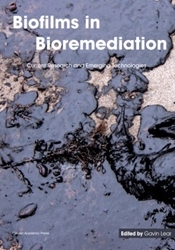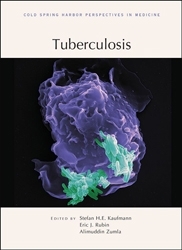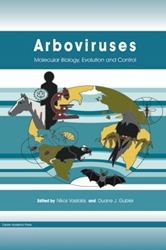Reviews
09 August 2016


Biofilms in Bioremediation: Current Research and Emerging Technologies
EDITED BY G. LEAR
CAISTER ACADEMIC PRESS (2016)
£159.00 ISBN 978-1910190296
The book has three sections, with each chapter written by one or more specialists in the area. This makes for easy navigation and chapters of specific interest can be read as stand-alone items. However, there is considerable repetition of basic biofilm information if read as a whole.
Ch. 1 is a useful introduction, if only for microbiologists to understand the importance of mass transfer! This should help to inform their research so that it is of more direct use to engineers. From my point of view, Table 1.2 is missing ‘landfill leachate’.
Ch. 2 is a comprehensive account of biofilm biology and its advantages for bioremediation. However, 19th century trickling filter technology, one of the earliest uses of biofilms for used water bioremediation, is not mentioned. I’m unconvinced that shear forces act on microbial cells at surfaces other than in the lab, but I’m glad this boundary layer is mentioned in relation to substrate transport.
In ‘Methods and Monitoring’, Fig. 4.11 shows a more comprehensive range of biofilm reactors than in Ch. 1 and I wonder why it was not included there. Ch. 4 also considers the role of chemotaxis – anomalous in a book about biofilms.
The brief Ch. 6, on microscopy, lacks images illustrating the applications of each type. In Ch. 8, immobilisation of cells in gels or foam cubes should not be considered as ‘biofilm’, nor ‘floating’ aggregations (flocs) and rhizosphere communities in Ch. 10.
Ch. 11 provides an excellent introduction to biofilm permeable reactive barriers, with many useful illustrations. Ch. 12 is not particularly convincing about biofilm cells having higher rates of biodegradation than planktonic ones.
Ch. 13a presents interesting growth-promoting effects of phenol-degrading bacteria on Lemna roots, while Ch. 13b presents convincing data for the use of specific strains of Sphingobium.
A useful book for those new to the area, but probably as a library copy. A second edition would benefit from closer collaboration between the chapter authors, to avoid unnecessary repetition.
MIKE DEMPSEY
Manchester Metropolitan University

Tuberculosis
EDITED BY S. H. E. KAUFMANN, E. J. RUBIN & A. ZUMLA
COLD SPRING HARBOR LABORATORY PRESS (2015)
US$135.00 ISBN 978-1621820734
Tuberculosis is a comprehensive and updated amalgamation of contemporary knowledge of fundamental and clinical research on tuberculosis (TB) and its aetiological agent, Mycobacterium tuberculosis. The first section, the most diverse, covers topics including basic research on TB-related cell biology and immunology, advances in vaccine development, and the development of laboratory models of infection, ranging from zebrafish to primates. Diverse animal models have accelerated our understanding of host–pathogen interactions and vaccine design and I felt that this topic (four chapters) perhaps deserved a section of its own. The second section starts with a focus on the biology of the tubercle bacillus. I particularly liked the interlinking of this fundamental knowledge to subsequent chapters on drug development, discovery and use. The final section is dedicated to clinical aspects of TB, including updated information on epidemiology, diagnostics, TB in the context of HIV co-infection, management of latent TB, the worrying trend of drug resistance, and advanced imaging methods for diagnostics.
Tuberculosis also offers alternatives or challenges to conventional views on TB, such as a newer look at the granuloma as a structure that is beneficial to mycobacterial expansion, and a critical analysis of comparative genomics in defining ‘virulence’ factors, and of the protective role of humoral immune response. The book offers updated information and views to a wide range of readers including, but not limited to, PhD students, early career postdoctoral fellows and clinicians pursuing research on TB.
APOORVA BHATT
University of Birmingham
The below reviews are published online in addition to those in the print or PDF copy of this issue of Microbiology Today.

Human Emerging and Re-emerging Infections vols. 1 & 2
EDITED BY S.K. SINGH
WILEY BLACKWELL (2016)
£275 ISBN 978-1118644713
This book is split into two volumes, focusing on viral and parasitic infections in Volume 1 and bacterial and fungal infections in Volume 2. Most of the 52 chapters describe the biology, genome structures, diversity and expression, replication, epidemiology, symptomology, prevention and control of different pathogens, as well as their mechanisms of disease. In my opinion therefore, the broad content of each chapter is not served well by the titles of many of the chapters (‘Pathogenesis of…’). Furthermore, I don’t believe the title of the entire book is entirely appropriate either; can all of the pathogens described really be considered as emerging or re-emerging pathogens? Presumably the authors believe so, although I don’t think the evidence was obvious from the content of some of the chapters. I’m sure there are variations in people’s definitions of the terms “emerging” and “re-emerging”, which might contribute to explaining this. Perhaps the book would have benefitted from an introductory chapter that defines both terms as well as discusses the factors leading to emergence and re-emergence more generally. Without this, the book just appears like a collection of chapters about a variety of human pathogens.
Some pathogens that have emerged recently do not appear in the book – Zika virus is an obvious one, although with the time that it takes for books to be published, I think the editors can be forgiven for not including it. However, I do believe that Ebola virus, SARS and MERS coronaviruses should appear in the book, as should influenza virus. In my opinion, some notable bacteria (e.g. Acinetobacter, Burkholderia, Stenotrophomonas), fungi (e.g. Acrophialophora , Fusarium) and protozoa (e.g. Balamuthia, Sappinia) could have also been mentioned.
A few of the monochrome figures within the text are not as clear as they could be. Each volume contains a collection of colour plates but these would have been better presented within the context of the appropriate chapter, rather than all together midway through each volume.
Despite my comments regarding the appropriateness of the title, it is still very informative and will be of interest to all those who study human infectious diseases. The price tag will, however, put the book well out of the reach for most individual purchasers.
CHRISTOPHER RING
Middlesex University

Arboviruses: Molecular Biology, Evolution and Control
EDITED BY N. VASILAKIS AND D.J. GUBLER
CAISTER ACADEMIC PRESS (2016)
£159 ISBN 978-1910190210
With the ongoing Zika virus epidemic spreading across the globe, understanding the biology of viruses that are spread by arthropods (arboviruses) has never been so critical as it is now. Where these viruses came from, where are they going and what we can do to stop them are essential areas of research, which Gubler and Vasilakis showcase successfully in this book. Leaders in the field, such as Marco Vignuzzi, Richard Kuhn and Goro Kuno, present chapters on basic and applied aspects of arbovirus biology on topics ranging from taxonomy, pathogenesis, vaccines and antivirals to the ability to generate genetically modified mosquitos. ‘State-of-the-art’ sections include those on metagenomics for virus discovery and diagnosis, interactions with host cell metabolism, and the immune system of arthropods. However, producing a succinct book on such a broad, complex and rapidly evolving field such as arbovirology is challenging and while the book isn’t the most polished, the critical information and messages are not lost and this book would suit any audience.
CONNOR BAMFORD
MRC-University of Glasgow Centre for Virus Research


